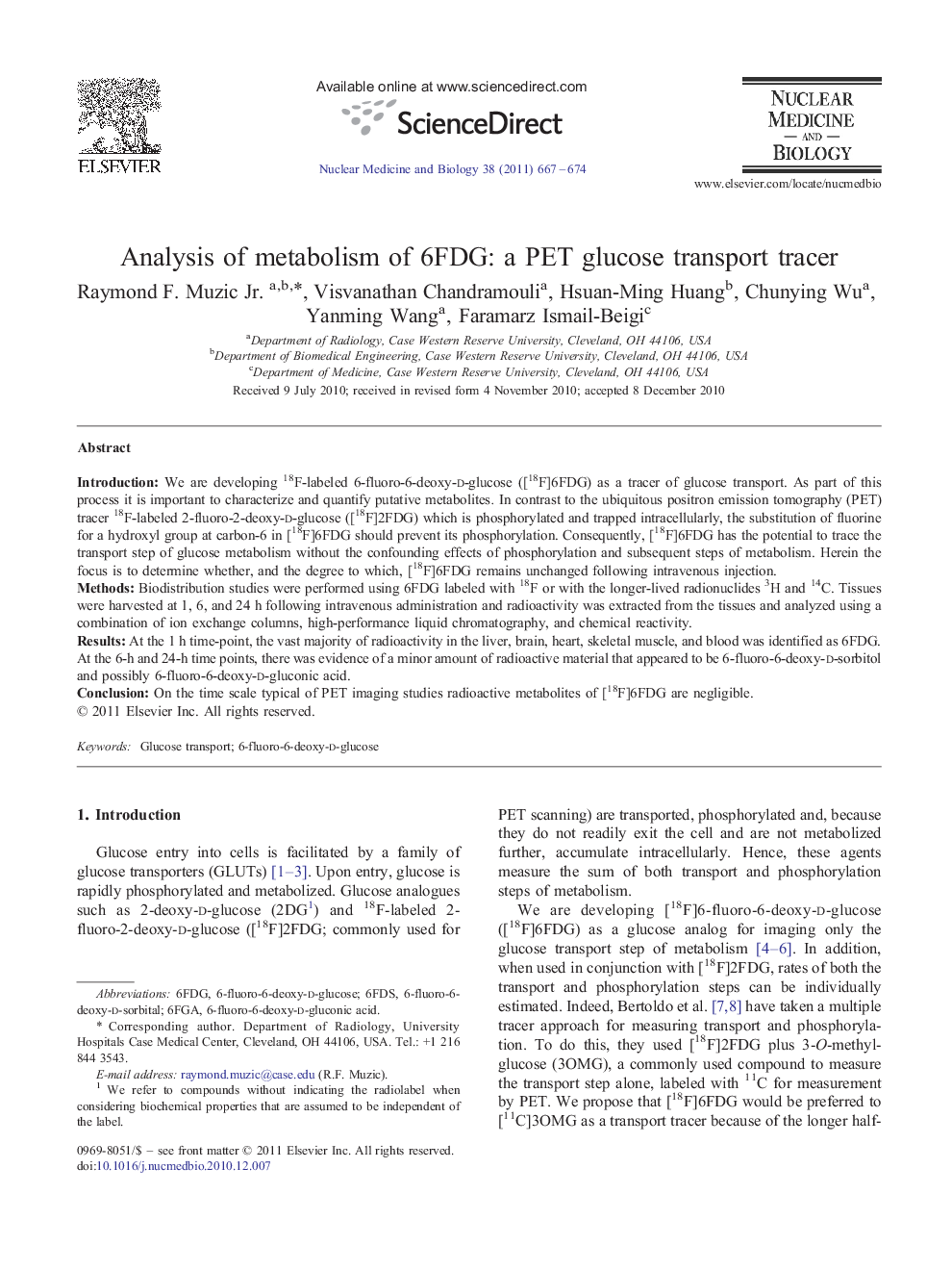| کد مقاله | کد نشریه | سال انتشار | مقاله انگلیسی | نسخه تمام متن |
|---|---|---|---|---|
| 2154270 | 1090226 | 2011 | 8 صفحه PDF | دانلود رایگان |

IntroductionWe are developing 18F-labeled 6-fluoro-6-deoxy-d-glucose ([18F]6FDG) as a tracer of glucose transport. As part of this process it is important to characterize and quantify putative metabolites. In contrast to the ubiquitous positron emission tomography (PET) tracer 18F-labeled 2-fluoro-2-deoxy-d-glucose ([18F]2FDG) which is phosphorylated and trapped intracellularly, the substitution of fluorine for a hydroxyl group at carbon-6 in [18F]6FDG should prevent its phosphorylation. Consequently, [18F]6FDG has the potential to trace the transport step of glucose metabolism without the confounding effects of phosphorylation and subsequent steps of metabolism. Herein the focus is to determine whether, and the degree to which, [18F]6FDG remains unchanged following intravenous injection.MethodsBiodistribution studies were performed using 6FDG labeled with 18F or with the longer-lived radionuclides 3H and 14C. Tissues were harvested at 1, 6, and 24 h following intravenous administration and radioactivity was extracted from the tissues and analyzed using a combination of ion exchange columns, high-performance liquid chromatography, and chemical reactivity.ResultsAt the 1 h time-point, the vast majority of radioactivity in the liver, brain, heart, skeletal muscle, and blood was identified as 6FDG. At the 6-h and 24-h time points, there was evidence of a minor amount of radioactive material that appeared to be 6-fluoro-6-deoxy-d-sorbitol and possibly 6-fluoro-6-deoxy-d-gluconic acid.ConclusionOn the time scale typical of PET imaging studies radioactive metabolites of [18F]6FDG are negligible.
Journal: Nuclear Medicine and Biology - Volume 38, Issue 5, July 2011, Pages 667–674